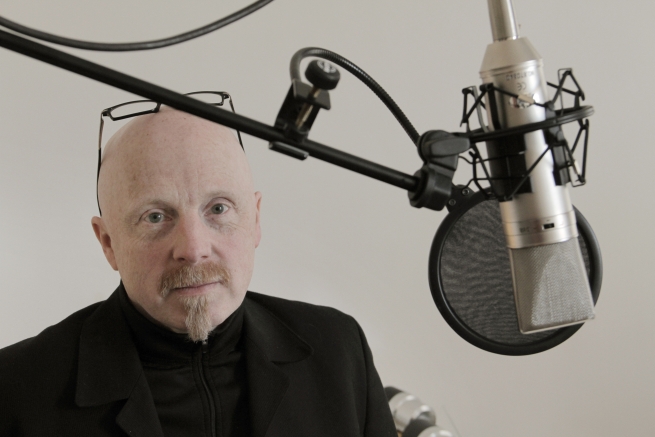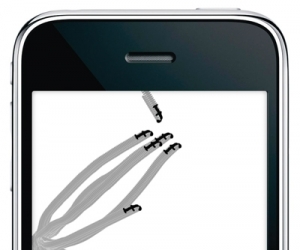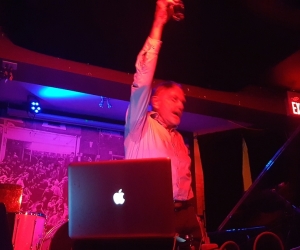
FULL TEXT AVAILABLE IN PRINT EDITION ONLY
A chill-blue image of ocean waves projects across the join of two white walls. At first the image appears still, but then you notice the waves undulating gently. On a table in front of the image, and housed in a small casket with its lid raised, twelve hearing aids emit a complex field of high-pitched feedback. These are the ingredients of sound artist John Wynne’s Cold Atlantic, shown recently at Toronto’s Justina M. Barnicke Gallery. Wynne grew up in Canada; his accent reflects that, although he left in 1983. Across the Atlantic, in a studio set up in his south London home, Wynne runs the animated image from Cold Atlantic on his laptop and talks with candour and enthusiasm about the development of his sculpturally simple, yet emotionally resonant installation.
“When my father was in hospital, dying, his hearing aids would constantly fall out and get lost in the bedclothes, and we would spend time looking for them. Just after he died I made a piece called Hearing Loss, simply using feedback from six hearing aids he had left behind.” The title Hearing Loss is neatly ambivalent, poignantly so, suggesting not only the fading of a sense but also absence made audible, loss being heard. Cold Atlantic may seem more remote, yet that title bears a further intimate connotation for Wynne.
Read more about John Wynne’s sound art works Transplant and Installation for 300 speakers, player piano and vacuum cleaner and his endangered-language projects Hearing Voices (exploring “click languages” in the Kalahari) and Anspayaxw (speakers of Gitxsanimaax in B.C.’s Skeena River area) in the print edition.
Audio: Transplant (2008). Composer by John Wynne. Stereo mixdown from Transplant, a 24-channel photographic and sound installation. Image: John Wynne. Image by: Timothy Wainwright; Home page image: Still from Anspayaxw. Home page image by: Denise Hawrysio.


